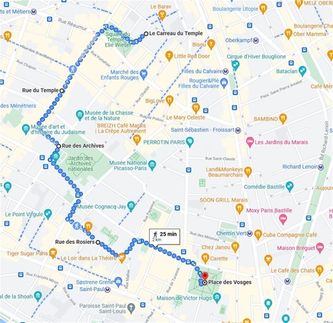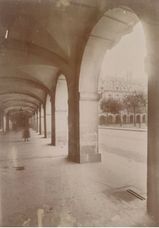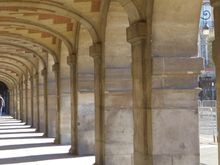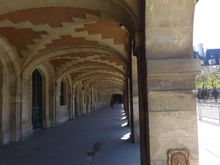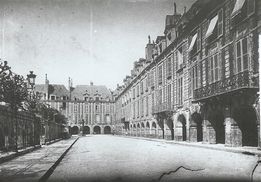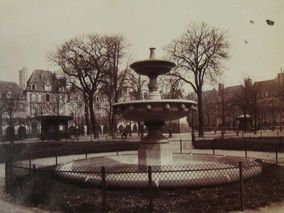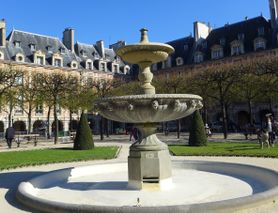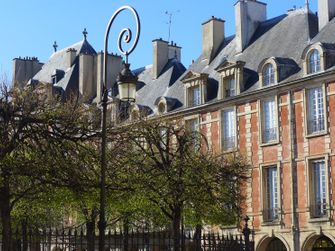Hora fugit - Un peu de Paris
Place des Vosges
The stroll around the rue des Rosiers is very close to the place des Vosges. They can be easily combined. From the rue des Rosiers, turn left onto rue Pavée and right onto rue des Francs-Bourgeois.
Arcades
Place des Vosges
Atget 1921 – 1924
(BnF)
Henri IV imagined this square to be a harmonious one with arcades for the comfort of the passers-by and the merchants. Indeed, the thirty-six brick Pavilions built with white stone, topped with slate roofs and supported at the base by wide and low galleries, make it the most elegant square in Paris.
From Place Royale, it became under the Revolution Place de l'Indivisibilité, and then Place des Vosges in 1800 to honor the Vosges for having been the first department to pay the largest share of its taxes.
It was temporarily renamed Place Royale during the Restoration and the Second Empire.
In his book “the Parisian pedestrian” published in 1939, Leon-Paul Fargue described several districts of Paris, among which Place des Vosges.
At his time, the Place des Vosges was essentially inhabited by common people, far from which it is today, mostly inhabited by rich politicians and celebrities and crowded during sunny days. Although mostly occupied by common people, it was still a quiet square with elegant pink mansions.
Before it was built by King Henry IV, the area was occupied by the former gardens of les Tournelles an other royal residence. King Henri II died there after a tournament where he was wounded to death. His wife, Queen Catherine de Medici decided to demolish it. Immediately, the new Place Royale was the place where to live and wealthy aristocrats lived there until the French Revolution.
After the revolution, like in the rest of le Marais, the pavillions were divided into small rented apartments and used by craftsmen. Starting 1970, they were renovated after André Malraux, Minister of Culture decided to protect high historical places like le Marais and Place des Vosges.
Places des Vosges
Atget - 1900/1901
(BNF)
Initially, the middle of the square was vacant. It was just a large area covered with sand, which formed a court for tournaments and other events. King Henry IV, who wished to have his own lodge over the court had a specific pavilion built on three arcades higher than the other ones, at the entrance of the rue de Birague. The Queen's pavilion was built opposite on the other side of the square, at the entrance to the rue de Béarn. The fountains were built far much later during the Restoration period. Louis Philippe also ordered the installation of the iron gates and of the statue of King Louis XIII, destroyed during the Revolution. In 1970, the elms killed by graphiosis were replaced by lime trees.
It is always very nice to sit in the garden, by one of these four fountains, for a moment of pure reverie and enjoy the view over the stone and brick buildings through the lime trees.
Un coin de la place des Vosges
1922 Atget
(Musée Carnavalet)
Texte / Photos : Martine Combes
Contact / newsletter:
